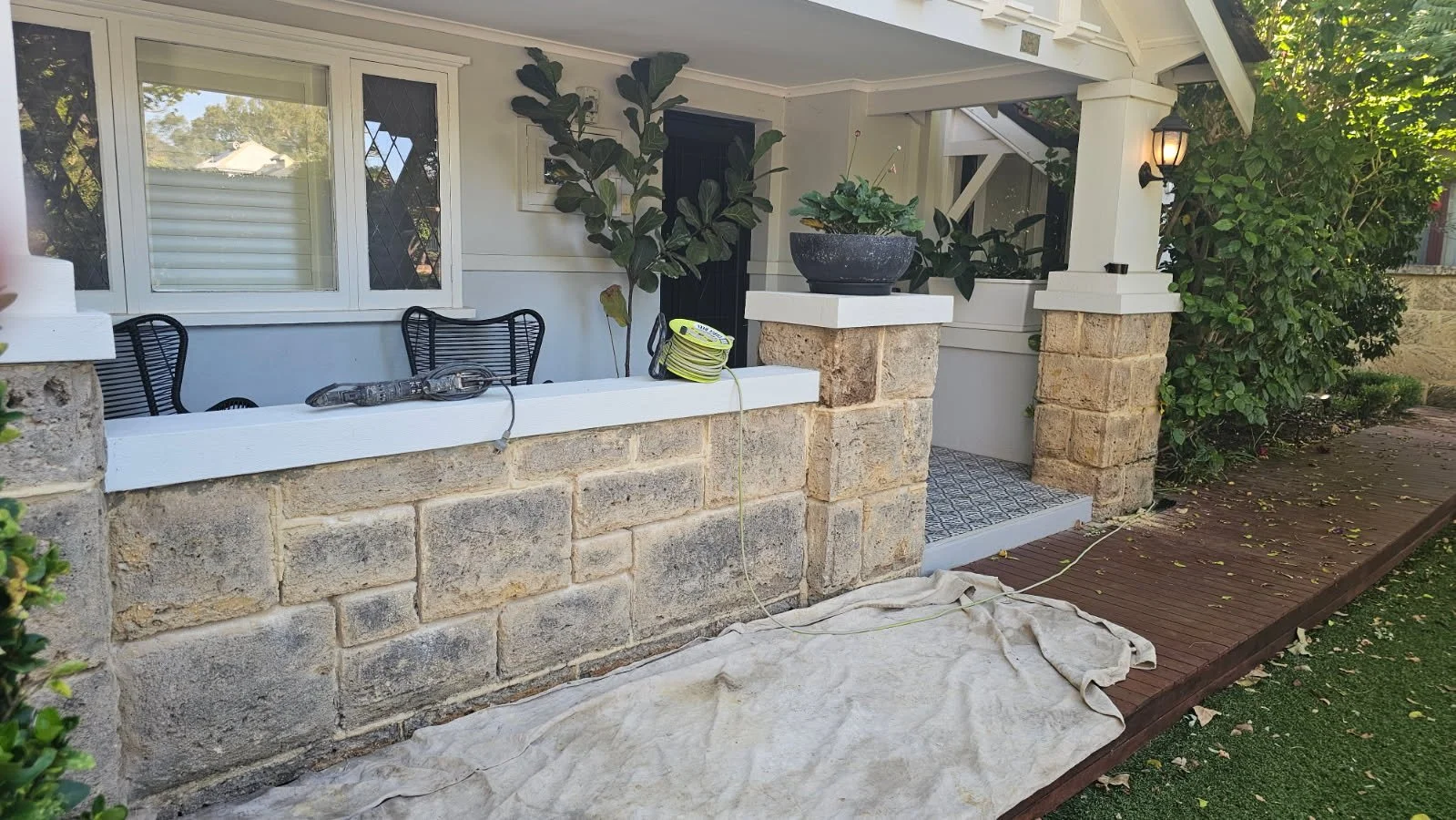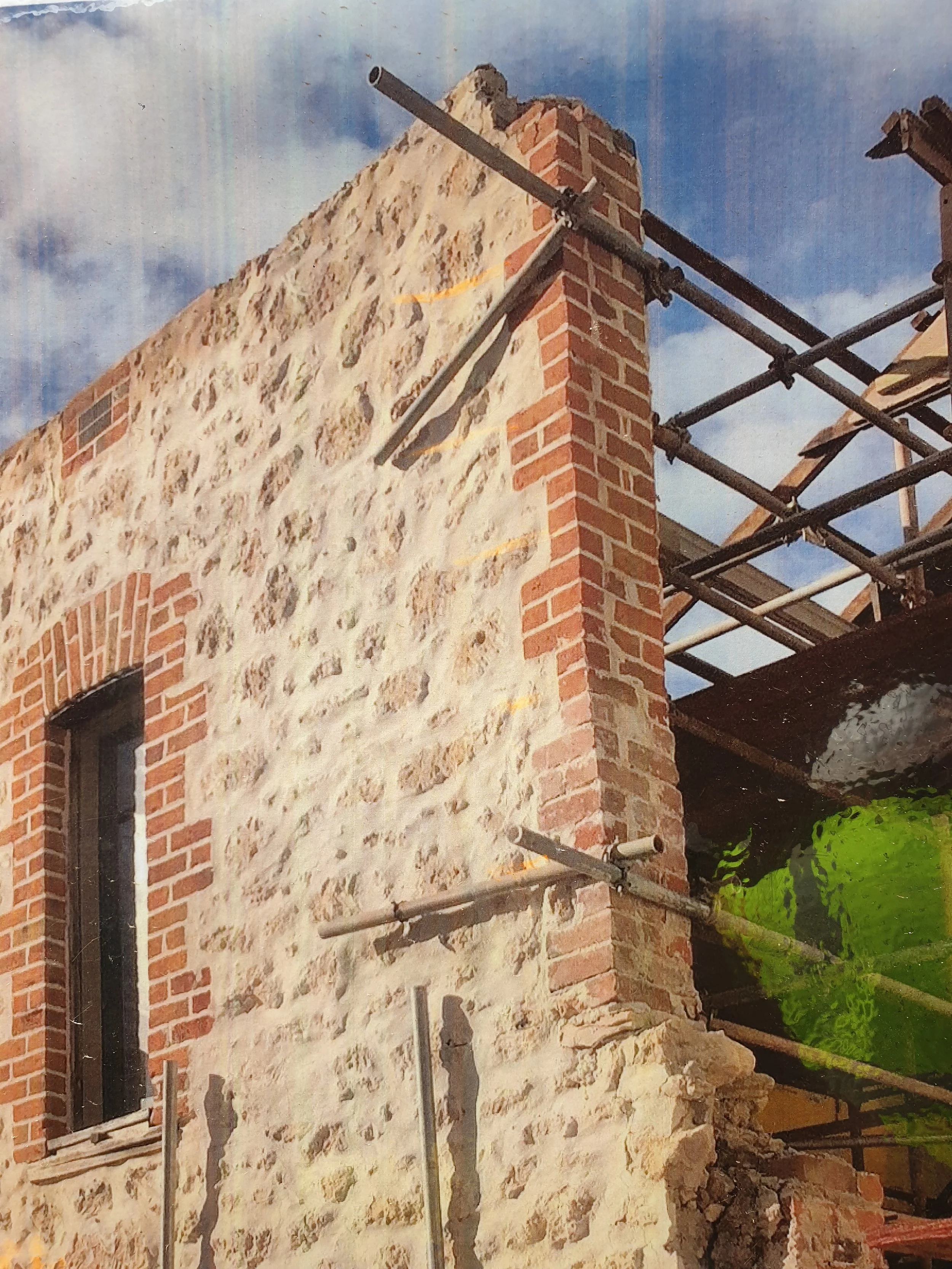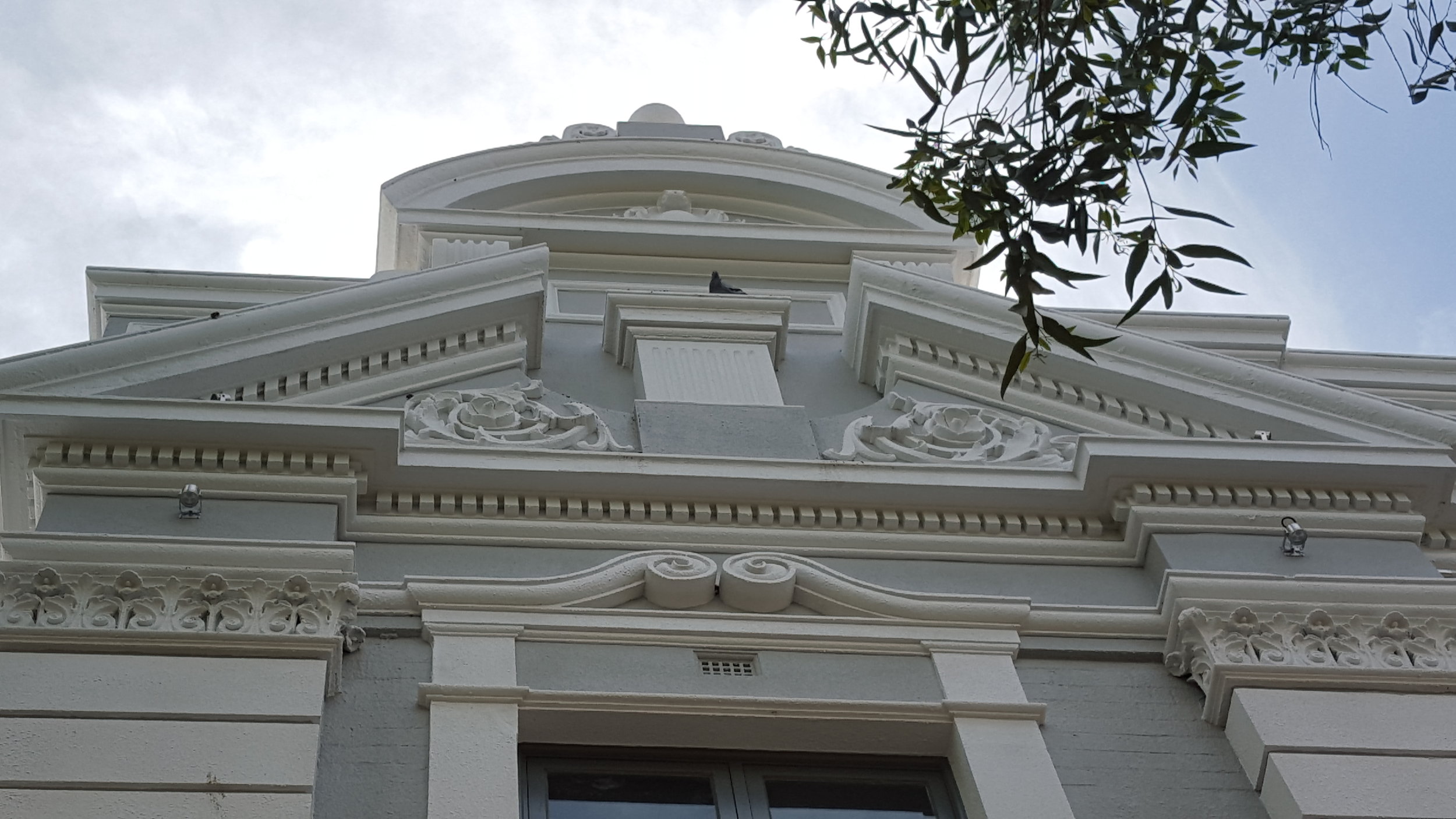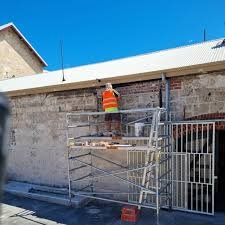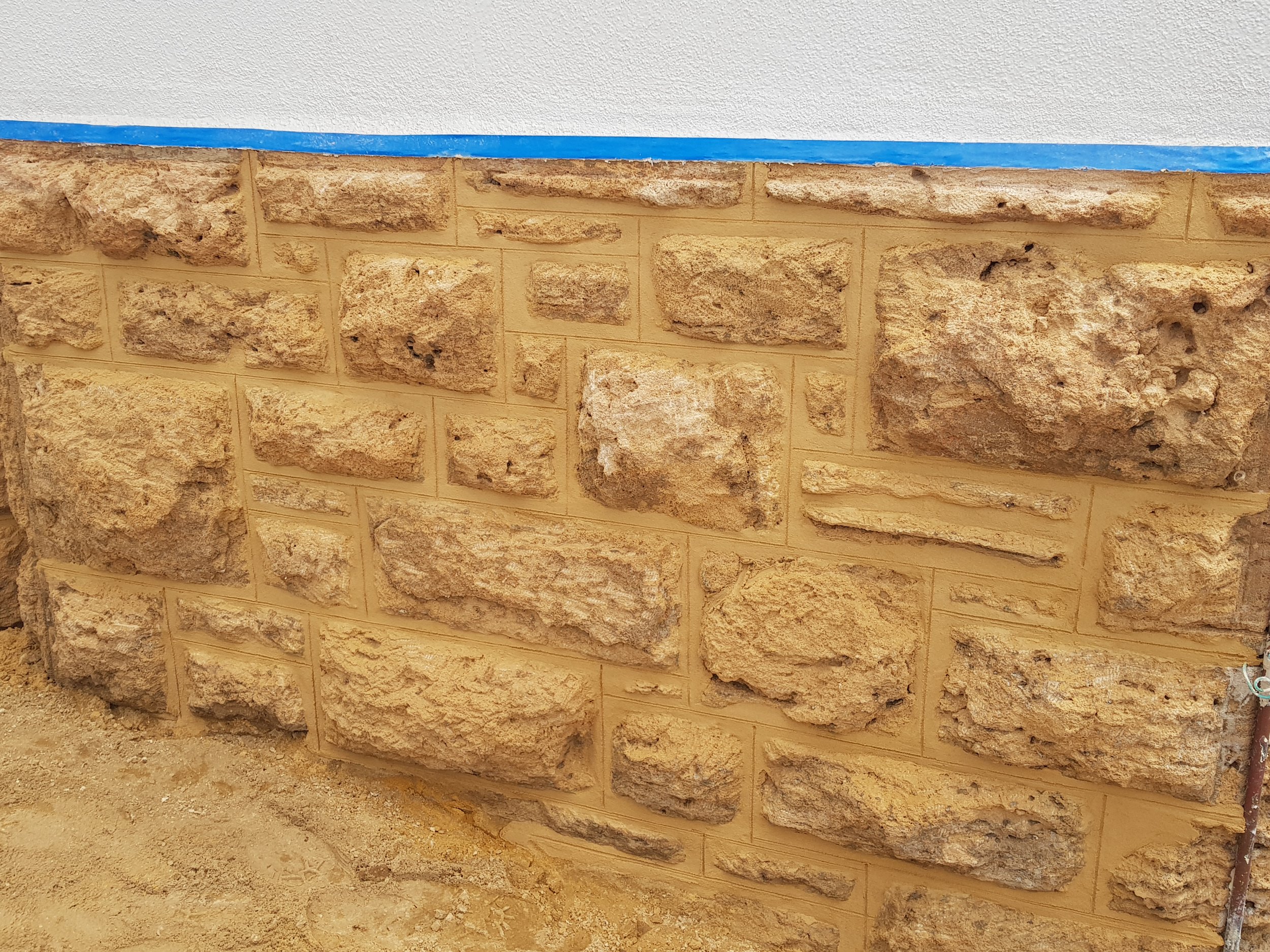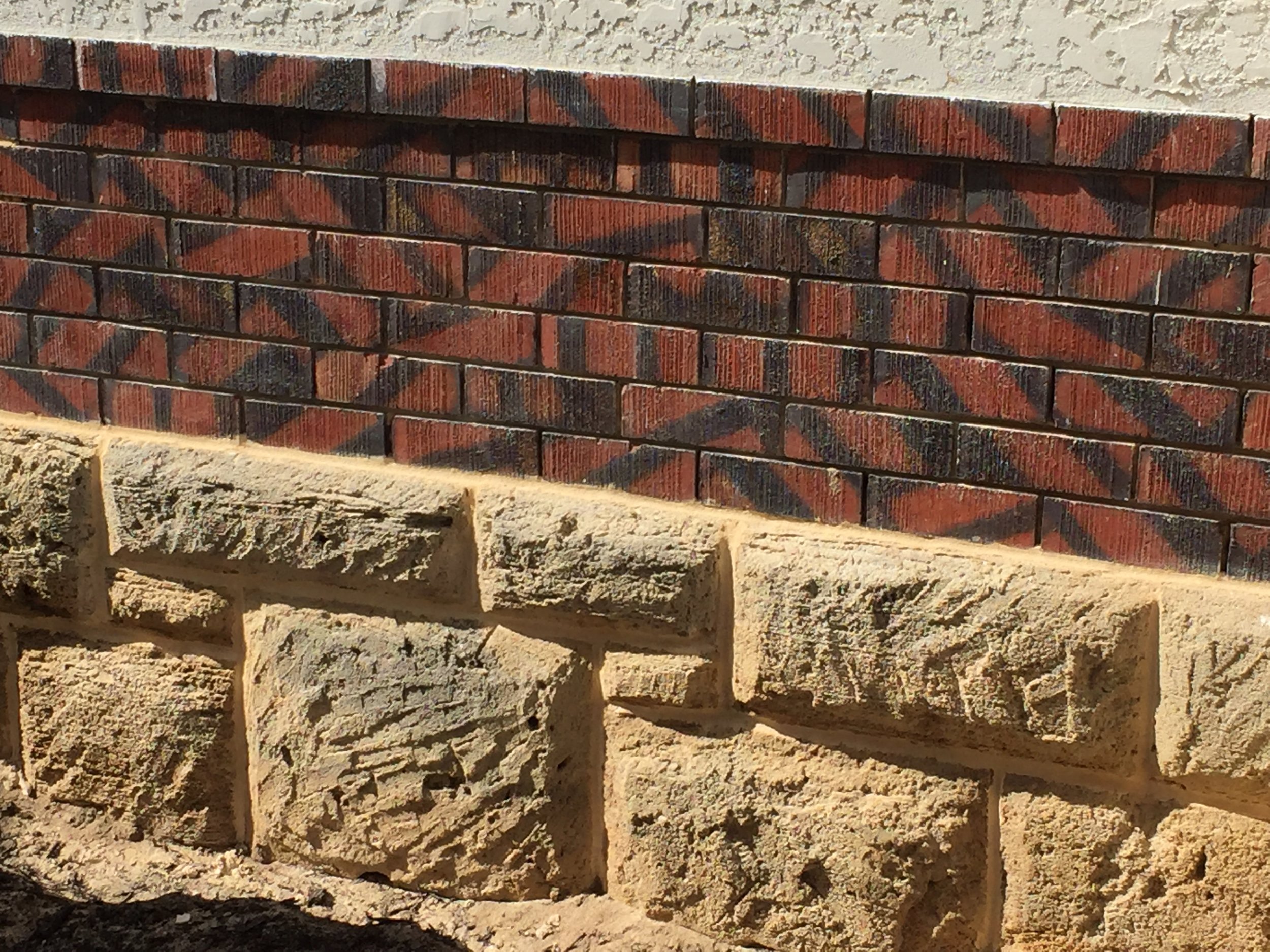Limestone Repair and Repointing Perth
Limestone repair and pointing restores deteriorated limestone structures. It involves cleaning, removing damaged mortar, repairing cracks, and repointing joints with compatible mortar. This process preserves the building's integrity and aesthetics, protecting it from further weathering and decay.
Limestone Repair & Pointing
We have over 35 years single experience (not the combination of all our employees) in this area of limestone repair, limestone repointing and restoration. On completion of the project we leave your home or property spotless.
- How We Repair Limestone
- Limestone Repair Before and After
- What Causes Limestone to Deteriorate?
- Why is the Mortar Falling Out?
- Fretting Mortar
- How To Spot It!
- Replacing the Limestone Mortar
- How Do I Know If Mortar Is Cement Or Lime?
- What Maintenance Can You Perform?
How We Repair Limestone
First:
At Bricks Fix WA we use our specialist hot wash machine to clean the limestone to remove staining before we start the limestone repointing and restoration services. This removes mould and staining from the limestone face. It is an important procedure of the limestone repair. This can bring the stone back to the original brand new look. Care has to be taken not to remove the face of the limestone.
Next:
Following this, we then carefully chop back the mortar or the lime joints to depth of around 40mm. The joint is then again jet washed to remove any loose debris, this is essential to give a good key for the new mortar or lime.
Important:
When repointing limestone it is very important to achieve the correct mix as problems can occur if the mix is too strong, this can result in the face being blown off the limestone. We have extensive knowledge in different mixes and products.
Finally:
The mortar is then coloured using various methods either by mixing different coloured sands or oxides and applied to the joint. The joint than can be etched and left to your desired finish leaving a complete new look and restoration to your wall. Sealers can be applied that seal and bind the limestone but still allow it to breath.
Limestone Repair Before and After
BEFORE REPAIRS
AFTER REPAIRS
A beautiful time tested limestone building we had the pleasure to work on. The Perth Mint.
What Causes Limestone to Deteriorate?
Durability is limestone’s strength but over time there are certain things that can accelerate deterioration. Being a carbonate rock, limestone is extremely absorbent. Too much moisture in an area with bad drainage can cause damp issues leading to deterioration of the limestone and mortar. Damp can also allow lichen and mould to multiply, effectively trapping the damp further. Weather events such as extreme heat and cold, and acidic rain will also cause issues that require attention.
Why is the Mortar Falling Out Between Your Limestone Blocks?
Common causes are.
Natural ageing
The elements
Wind can act like a sandblaster especially on the coast.
Water especially reticulation should never be allowed to spray against your brick or limestone walls.
Poor construction
Incorrect mortar mix
Fretting mortar is caused when cement joints become damp or was an incorrectly mixed batch of mortar that was used during construction.
Limestone mortar repairs in Fremantle.
Fretting Mortar
Its not difficult to recognise fretting mortar. Inspect the mortar joints for crumbling mortar or a build up of powder at the base of the limestone wall.
When really advanced it is not unusual for a mortar joint to be completely missing. At this point it is time to call us for a free inspection and quote before serious structural damage occurs. It really isn’t best to put a repair off as it can turn into a very expensive fix.
How To Spot It!
Fretting mortar is pretty easy to spot. When you’re inspecting your external limestone have a look at the cement joints. If you see any crumbling or powdery mortar it’s a good indication that your mortar is fretting. In its advanced stages, the mortar will be almost completely missing. At that point, the rows of limestone may begin to collapse onto the blocks below.
Replacing the Limestone Mortar
This is also known as mortar pointing and will reintroduce the stability of your limestone wall and stop fretting from being a problem. A mortar suitable to your proximity to the coast must always be used.
lime mortar (lime putty)
natural hydrated lime (nhl)
Brickies Grey Coastal Cement is ideal for 1 km from a surf coastline or up to 100 m from a non-surf coastline, e.g. estuary and coastal river zones. Walls in contact with saline water or the ground in aggressive soils.
Brickies Coastal lite is ideal 1 km from a surf coastline or up to 100 m from a non-surf coastline, e.g. estuary and coastal river zones. Walls in contact with saline water or the ground in aggressive soils.
How Do I Know If My Mortar Is Cement Or Lime?
Cement (portland) usually will contain small white pebbles, where there is a distinct different to the white chunks present in lime mortar.
If you can scape the mortar pretty easily you may well be looking at a lime mortar. Lime will fizz in acid./vinegar. Obtain a small section of mortar and put it in white vinegar. If it fizzes, it's most likely lime!
ALTERNATIVELY IF YOU ARE UNSURE YOU CAN ALWAYS HAVE IT PROFESSIONALLY TESTED. Which will determine the ratios of lime and sand in the mortar
What Maintenance Can You Perform?
Regular checks for fretting mortar
Keep reticulation away from you brick and limestone walls
Look for sand at the limestone wall base
Keep your brick and limestone walls clear.
Bricks Fix WA
If you prefer to email, please fill out the following form and you will be contacted as soon as possible.



